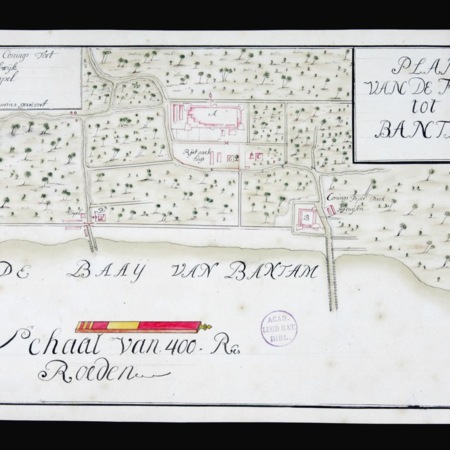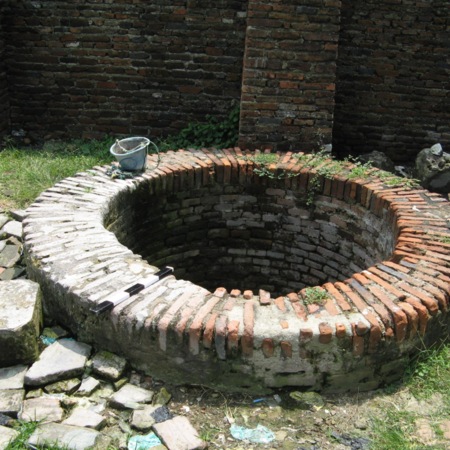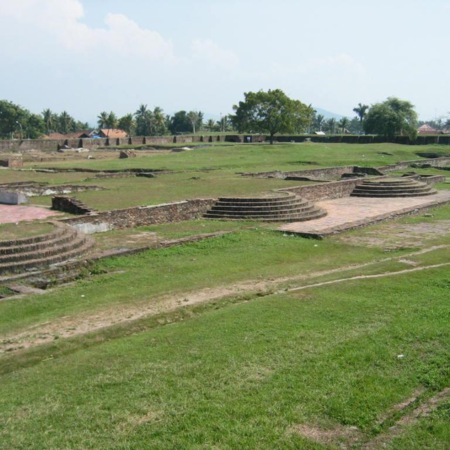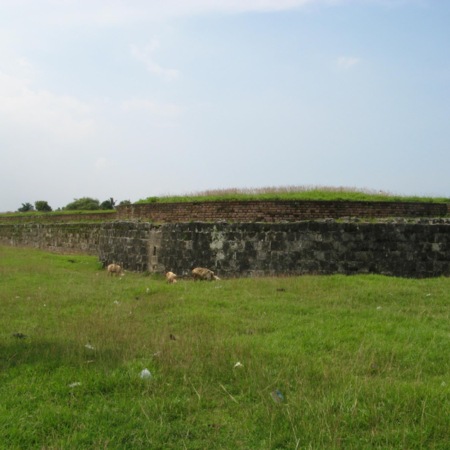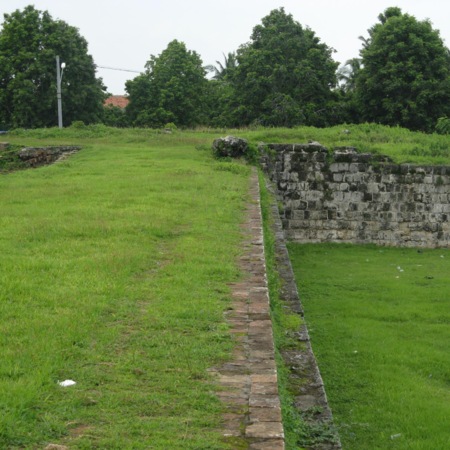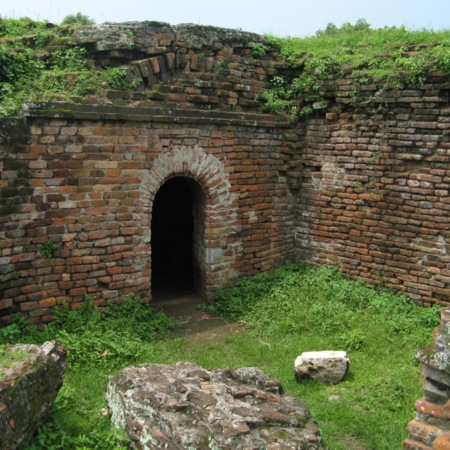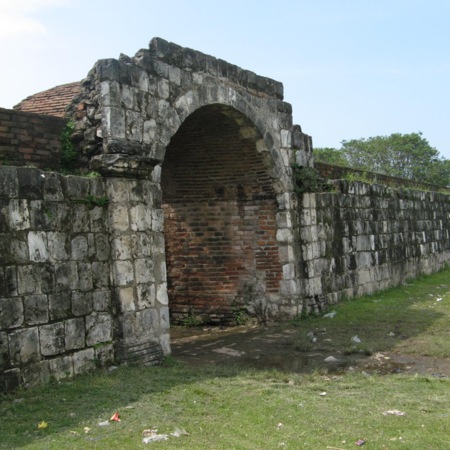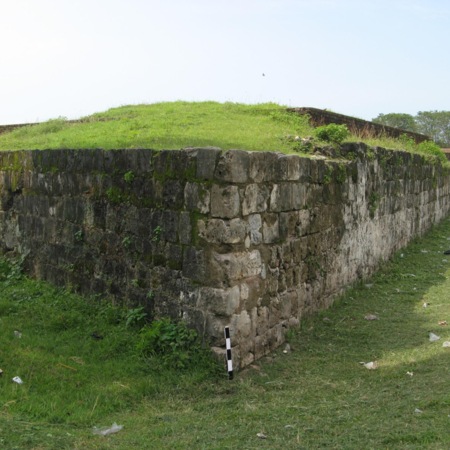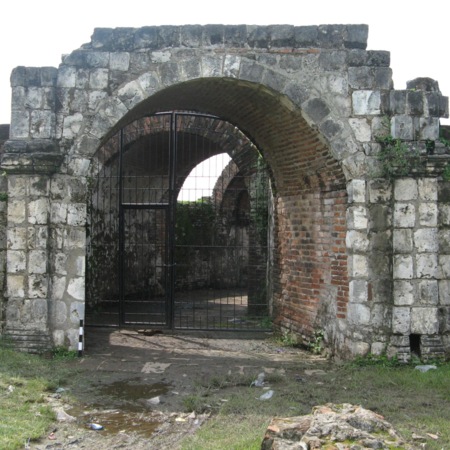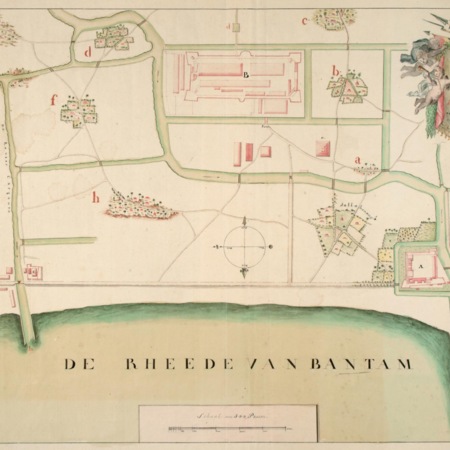The first kraton or royal palace of the sultanate Banten (Bantam) was constructed during the reign of Sultan Maulana Hasanuddin (1552-1570) He gave it the name Surosowan at the advice of his father, Sunan Gunung Jati. It was also called “Gedong Kedaton Pakuwuan”.
The encircling wall which was made of bricks and coral stones, was built by his successor Sultan Maulana Yusuf (1570-1580). During his reign Banten became a big city and also an international trade center, replacing Malacca which in 1511 had fallen into Portuguese hands in the beginning of the 16th century. Merchants from many countries in Asia and Europe who refused to trade with the Portuguese preferred to sail to Banten.
Following the great fires in 1605 and 1607, the royal palace was completely rebuilt on the same location. Surosowan was encircled by 2-meter high and 5-meter thick brick walls. The area inside the walls measured 300 x 100 meters with a total area of around 3 hectares. Initially, the walls were only to prevent commoners from seeing the palace inhabitants, and not as a protection against attacks.
During the reign of Sultan Ageng Tirtayasa (1651–1672) a war broke out with his son Abdul Kahar Abun Nazar, also known as Sultan Sultan Hadji (1671-1690). Hadji fortified the royal palace. He was besieged but was released upon the arrival of Dutch soldiers. The support of the VOC during the civil war eventually led to Banten becoming subordinated to Batavia. The Dutch built Fort Speelwijk to control their influence on the sultan in his palace
After the civil war, damages to the royal palace were repaired. The Dutch stone-mason Hendrik Lucasz Cardeel, who took the name of Pangeran Wira Goena after converting to Islam, built in a rectangular new wall in 1680-1681 with bastions at the four corners, ravelins and a gate on the north side. It was made of bricks and coral stones The Dutch renamed the fortified royal palace Fort Diamant (Kota Intan).
In the 18th century, the buildings inside the palace were expanded several times. In 1701, Sultan Zainul Abidin installed water pipes between the pools of his country house at Tasik Ardi and the palace.
Governor General Daendels (1808-1811) planned to establish a marine port at Meeuwenbaai (Teluk Peucang). He ordered the Sultan to provide laborers for the groundwork. The location was extremely unhealthy, killing a great number of workers and causing many others to run away. Daendels saw this as opposition of the sultan and the royal administrator. During the negotiations the emissaries and their escorts were murdered. With 1,000 men, Daendels immediately stormed Fort Diamant which was defended by 3,000 men. The Sultan was taken prisoner and the royal administrator executed Banten was declared a Dutch territory. Fort Diamant must be demolished, but that didn’t happen before 1832 because the people refused to demolish the symbol of their rulers.
In 1893, the curator of the ethnographic collection at the Batavia Museum, Serrurier, obtained a map depicting the remnants of the city. Between 1915 and 1930, the Oudheidkundige Dienst (Archaeological Office) restored the ruins. The Indonesian government continued the restoration work and research activities. In the 1970s and 1980 archaeological excavations were conducted. The Banten museum was opened in 1985.
